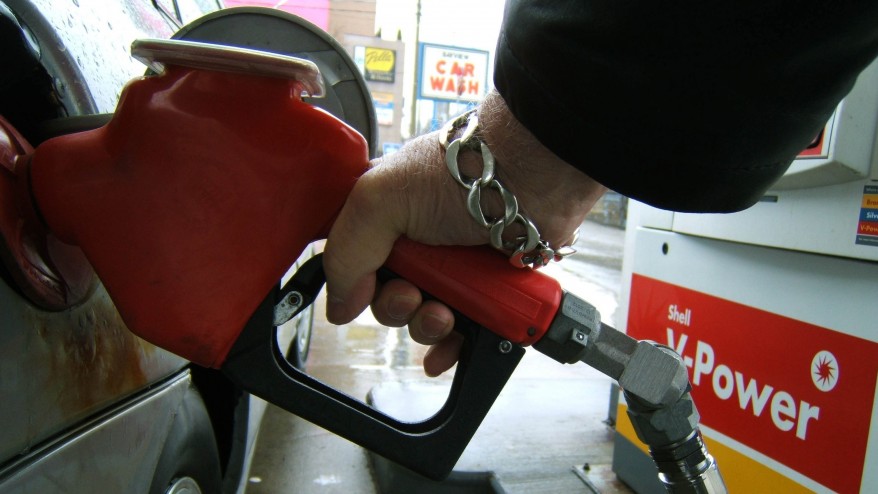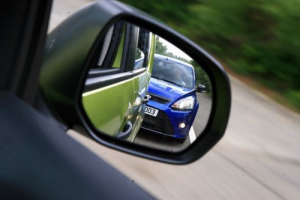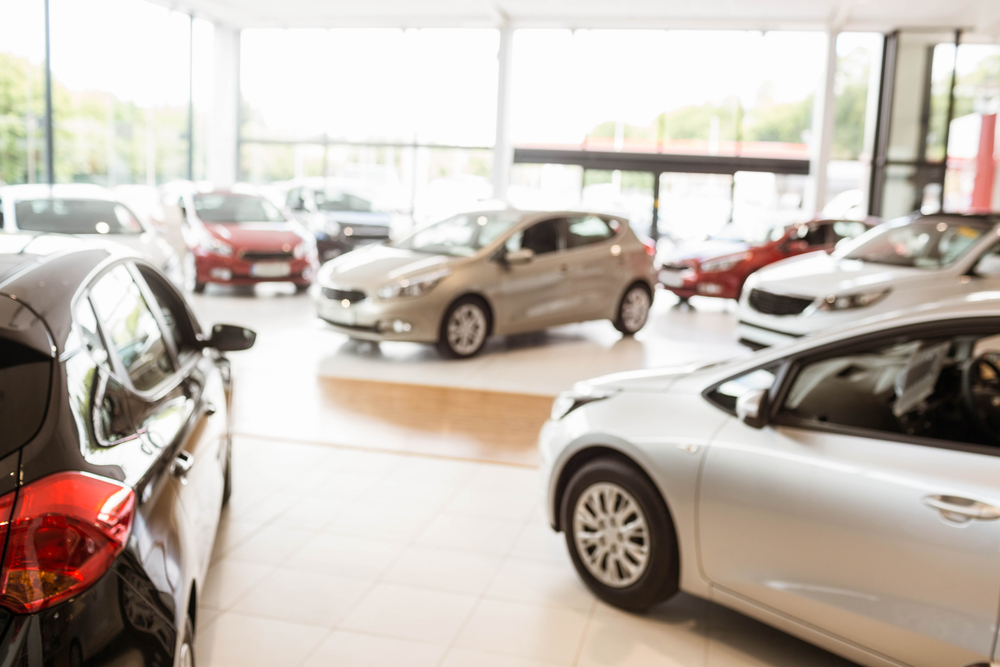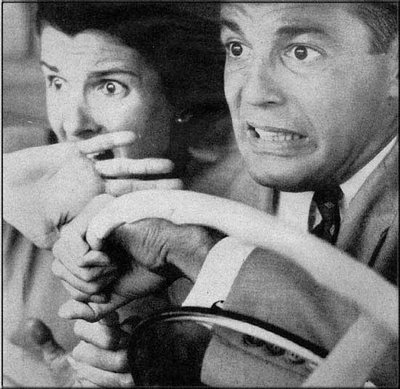5 Fuel-Saving Hacks that Can Steer You Into Serious Trouble
For every healthy or frugal practice, you have a small group of people who take things too far. There are couponers, and then  there a extreme couponers. There are dieters, and then there are extreme dieters. In the auto world, you have such individuals too, and we’re not talking about street racers. We’re talking about people who take hypermiling to an extreme.
there a extreme couponers. There are dieters, and then there are extreme dieters. In the auto world, you have such individuals too, and we’re not talking about street racers. We’re talking about people who take hypermiling to an extreme.
These folks are so bent on improving their vehicle’s fuel efficiency, they toss the safety of their family members, friends and themselves out the window. Although there is nothing wrong with the practice, there are dangerous techniques associated with hypermiling, and you should avoid them like a bad case of the flu.
A Quick Definition of Hypermiling
Recently, in our post about driving activities for the new year, we mentioned the concept of hypermiling. It’s a fancy term that describes a series of habits drivers adopt to get the most mileage out of their cars. Technically, there are millions of drivers out there who attempt to do this, but there’s a community devoted to hypermiling, treating it like an art and science.
Googling for hypermiling forums would yield several results. As we’ll discuss later, the legitimate hypermiling communities endorse safe techniques and condemn the dangerous ones. To understand what they stand for and stand against, however, we need to look at the dangerous behaviours of some hypermilers and the risks associated them.
When Hypermiling Goes Out of Control
Just like the couponers and dieters, there are people who like to take hypermiling to the extreme. And they endanger the lives of others as well as their own. You may have heard about some of these practices in the past and if you have, you’ll probably agree that they’re absurd.
1. Tire overinflation
Slightly over-inflating your tires has its merits. If you wanted to store your car in the garage, putting a little more than what’s needed will counteract a loss of pressure in cold temperature. Minor over-inflation is helpful for fuel economy since it reduces contact between rubber and the road, thus cutting down on rolling resistance. But here’s the problem: overinflation is damaging and dangerous. First, it causes the tire treads to wear out much faster. However, the biggest danger that comes with over-inflated tires is the risk of a blowout. And if you know someone who has ever experienced a blowout, they’ll certainly tell you how frightening an experience it is.
2. Tailgating trucks
Most drivers try to stay as far away from trucks as possible. They’ll speed up, slow down, change lanes – they’ll do whatever  it takes to put some distance between them and the truck. And then you’ve got the extreme hypermilers who like to get intimate with trucks. They tailgate them for fuel efficiency. The practice is also known as drafting. Essentially, it works like this: Drivers follow a truck closely – usually within a distance of 10 – 20 feet – since it shields their cars from rushing air, meaning less resistance.
it takes to put some distance between them and the truck. And then you’ve got the extreme hypermilers who like to get intimate with trucks. They tailgate them for fuel efficiency. The practice is also known as drafting. Essentially, it works like this: Drivers follow a truck closely – usually within a distance of 10 – 20 feet – since it shields their cars from rushing air, meaning less resistance.
Ultimately, it means your car can cruise along without having to burn as much gas. And there are studies to prove that it reduces gas consumption. But it comes at the cost of safety, and it’s also illegal. If that truck were to suddenly brake, you’d virtually have no time to avoid rear-ending the trailer, which could lead to a horrific collision.
3. Removing car components
One of the keys to improving fuel efficiency is to carry less load. That could mean leaving some suitcases at home and renting a canoe instead of hoisting one on your roof. But extreme hypermilers take this to another level. Not only will they keep stuff at home, they’ll willingly take out car parts as well. They’ll remove just about anything, such as a heater, backseat and even frighteningly, their airbags, all in the name of spending less for gas. We couldn’t imagine these folks enjoying a comfortable car ride at all – travelling with them on a road trip may even prompt adults to ask if they are ‘there yet’. But the true danger comes with the removal of safety features. Driving without basic devices, leaves both drivers and passengers at a much higher risk for serious and even fatal accidents.
4. Switching engine off at traffic lights
Ever notice how some people wait 3 seconds before moving off when the light turns green? Well, they might be a hypermiler. One of the practices associated with over-the-top hypermiling is switching off one’s engine at a red light. It’s not a dangerous practice in itself. However, it is irritating beyond measure for drivers behind you, and it can lead to a harrowing situation if the person behind has road rage. It’s also absurd for the fact that a red light will change within a few minutes (sometimes seconds). In addition to turning off at red lights, there’s also the practice of rolling through traffic signs and stoplights, which is dangerous and illegal too.
5. Choosing risky routes with few stop signs/lights
A string of intersections can be kryptonite for the dedicated hypermiler. So some decide to avoid them altogether. How? They choose a route that has the fewest intersections and stop signs as possible, so that they can stay on the move. Again, the practice in itself may not be dangerous (although it could be very impractical), but the routes you travel could be dangerous for you and your family. This is certainly true if you live near areas with high crime rates, or isolated routes where roadside assistance would take more time to reach you if an emergency (such as a breakdown) took place. Ironically, this technique can be counterintuitive since the alternative routes might be longer.
What Does the Hypermiling Community Have to Say?
Earlier on, we mentioned the presence of hypermiling communities online. They’re real and they’re devoted. And it’s also important to highlight that the most serious of these groups in no way condones the five practices listed above. In fact, there’s a big discrepancy between the “black hat” hypermiling techniques, and the ones that are actually safe. For example, this forum originating from 2008 illustrates the reality that most hypermilers are careful, law-abiding drivers. With that said, there are plenty of hypermiling habits that are practical to follow.
The Light Side
- Don’t drive so fast – It’s a relatively painless way to keep the tank fuller and avoid the cops.
- Reduce use of electronics – Use the electronic devices in your car as needed, not constantly.
- Travel with fewer items – Learn to carry less luggage on trips. It’ll save you gas money and a trip to the chiropractor or massage therapist.
- Keep tires properly inflated – Don’t keep your tires under or over-inflated (although slight over-inflation is usually acceptable) – follow your manufacturer’s advice. This will ensure the best mileage possible, while keeping you safe.
- Maintain all aspects of your vehicle – Make sure to get your oil changed, and replace components such as spark plugs or batteries if necessary. Good maintenance alone makes a big difference in how your car performs in the fuel department.
Avoid Going ‘Hyper’ with Hypermiling Techniques
There’s no doubt that gas is a necessary evil of driving. It doesn’t matter how much it goes up, or how far you have to travel to get it, your car can’t go without it. And with the economic ups and downs, the prices aren’t always the friendliest, giving rise to practices such as hypermiling. However, there are unsafe techniques that should be avoided.
If you plan on becoming a hypermiler yourself, take a hard look at both the good and bad tactics associated with the technique. Doing so will remind you of what is safe and dangerous, along with what is legal and illegal. Ultimately, you’ll save on gas without having to put yourself in harm’s way.






